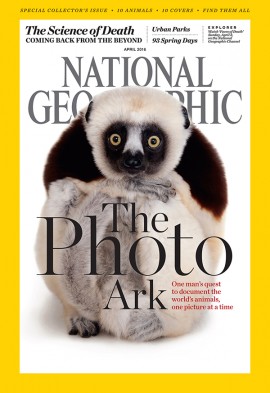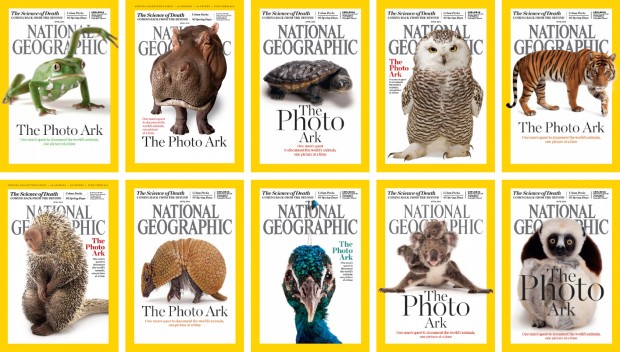Our Lemur is Famous!

Announced yesterday on NBC’s Today Show, a Houston Zoo’s Coquerel’s sifaka–a type of lemur–is one of ten animals featured on National Geographic’s April covers. According the magazine, “In a publishing first for National Geographic magazine, the April 2016 issue has 10 different covers featuring the work of well-known National Geographic photographer Joel Sartore.”
Also from National Geographic, “The April covers highlight the National Geographic Photo Ark project, a multiyear effort with Sartore to photograph all captive species and inspire people to save these animals before they disappear. For many of Earth’s creatures, time is running out. Species are disappearing at an alarming rate. To motivate people to care and help stop the crisis, Sartore is creating intimate portraits of an estimated 12,000 species of birds, fish, mammals, reptiles, amphibians and invertebrates. To date, he has photographed nearly 6,000 animals. Once completed, Photo Ark will serve as an important record of each animal’s existence and a powerful testament to the importance of saving them.”
The Houston Zoo has been proud to partner with Sartore and his National Geographic Photo Ark project for six years and many of the Houston Zoo’s animals have played a central role in the project. In 2015, Sartore’s photo of one of the Houston Zoo’s clouded leopards was featured on the Vatican and his images of Houston Zoo sifaka, greater eland, and hawk-headed parrot were projected onto the Empire State Building. Two of the zoo’s staff members even organized trips with Sartore to Vietnam and Colombia to capture images for his world-wide search for unique animals.
The Houston Zoo is dedicated to saving animals in the wild, including the endangered Coquerel’s sifaka. Native only to the small island of Madagascar, sifaka are threatened by deforestation, habitat fragmentation, and hunting. To help save these animals from continued decline, the Houston Zoo partners with a Malagasy (native people of Madagascar) conservation organization based in Madagascar called GERP, a French acronym which translates to Primate Education and Research Program. GERP is comprised of many Malagasy researchers and conservationists that have grown up around the areas where they now work to protect the wildlife and habitat. Not only do they address threats to the animals, they have a clear understanding of the challenges their own local people face as well. In finding solutions that benefit the people and animals, they ensure long-term sustainability and success.

Top row, from left: waxy monkey tree frog, hippopotamus, Reimann’s snake-necked turtle, snowy owl, Malayan tiger. Bottom row, from left: Brazilian porcupine, southern three-banded armadillo, Indian peafowl, mother and baby koalas, Coquerel’s sifaka.
Guests to the Houston Zoo can see a family of three Coquerel’s sifaka in Wortham World of Primates in the center of the zoo where they can learn all about primates and what they can do to help protect them. People take action to help save these unique animals by simply being aware of the kind of woods they buy. Many precious woods such as rosewood and ebony are illegally logged from Madagascar’s forest to be made into furniture, musical instruments and other items. Buy locally sourced wood products where ever possible.
